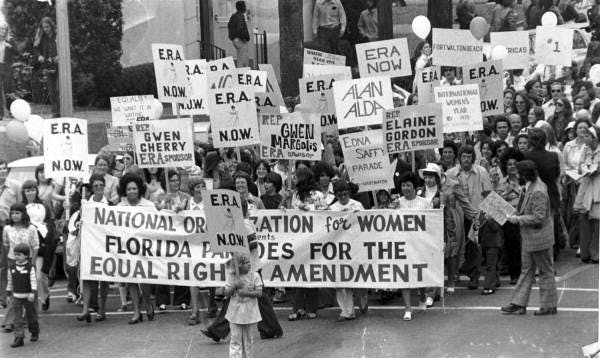The Fundamental Problem of a National Organization for Women
‘The priorities of individual women were not easily aligned.’ Women unite on certain issues and on others they do not because of clashing political persuasions, personal circumstances, and even sexual orientation.

‘The Women of NOW: How Feminists Built an Organization That Transformed America’
By Katherine Turk
Farrar, Straus and Giroux, 448 pages
‘On Women’
By Susan Sontag
Picador, 208 pages
In the late 1960s, founders of the National Organization for Women “knew there was cause for skepticism,” Katherine Turk notes: “The priorities of individual women were not easily aligned. They had varied relationships to the law, to work, to men, to money, and to one another. … The very premise of a civil rights group for women was bold and uncertain.”
Ms. Turk describes an era different from this one and yet, as the biographies of women today show, not so different when acknowledging that the “priorities of individual women” are not “easily aligned.” Women unite on certain issues and on others they do not because of clashing political persuasions, personal circumstances, and even sexual orientation.
Ms. Turk focuses on three NOW leaders in order to provide a nuanced understanding of its institutional history, which, she points out, is not of a centralized organization but rather an alliance of local groups who pursue women’s rights with varying degrees of effectiveness and success.
The personalities and backgrounds of the three founders demonstrate why NOW has been successful — especially in re-orienting the public dialogue about women’s roles in family, society, business, and government — and why it is so difficult for NOW to remain a coherent force for women’s rights.
A union organizer of textile workers, Aileen Hernandez, born in Brooklyn of Jamaican immigrants, wanted to overcome the limitations put on women by men in the struggle for social justice.
A Miss Michigan beauty contest winner, Patricia Hill Burnett, wife of a Detroit businessman, mother of four, and an artist, became a Republican because of her dedication to individual rights, which she came to associate with a feminism that argued for more personal freedom for women.
A Catholic from what Ms. Turk calls a Wisconsin “hardscrabble” family, Mary Jean Collins was a fervent Democrat, sidetracked for a while because of “lesbian feelings” that she could not fully articulate. Working for NOW became a way to liberate herself.
The diversity of these women’s attitudes and experiences is presented to dispel the characterization of NOW as a privileged association of middle class white women. Ms. Turk’s archival work shows a much more complex dynamic.
With Ms. Turk’s group biography in mind, Susan Sontag’s essays of the 1970s seem like an effort to catch up to NOW.
In her introduction, Merve Emre suggests otherwise — that women’s issues and feminism were integral to Sontag’s thought. Yet until the 1970s, there is little evidence to show in Sontag’s life or writing that matters like “The Double Standard of Aging” and “The Third World of Women” ever concerned her.
Sontag provides some thoughtful discussion in essays like “A Woman’s Beauty: Put-Down or Power Source?” and “Beauty: How Will it Change Next.” Yet the essays lack what many feminists of the time considered essential: the writer’s own avowal of her relationship to the sexual politics she advocated.
Certain passages in “On Women” are downright silly and impractical. Here is one example Ms. Emre quotes in her introduction: Women “should whistle at men in the streets, raid beauty parlors, picket toy manufacturers who produce sexist toys, convert in sizable numbers to militant lesbianism, operate their own free psychiatric and abortion clinics, provide feminist divorce counseling, establish makeup withdrawal centers, adopt their mothers’ family names as their last names, deface billboard advertising that insults women, disrupt public events by singing in honor of the docile wives of male celebrities and politicians, collect pledges to renounce alimony and giggling, bring lawsuits for defamation against the mass-circulation ‘women’s magazines,’ conduct telephone harassment campaigns against male psychiatrists who have sexual relations with their women patients, organize beauty contests for men, put up feminist candidates for all public offices.”
Ms. Emre does not suggest the passage is tongue-in-cheek. Needless to say, Sontag never made a public spectacle of herself in the ways that she exhorts women to do, though she did renounce alimony.
Establishing and maintaining NOW has been hard and valuable work, Ms. Turk amply demonstrates, but in the main that record of achievement has little to do with Susan Sontag’s fulminations.
Mr. Rollyson is the co-author with Lisa Paddock of “Susan Sontag: The Making of an Icon, revised and updated.”

